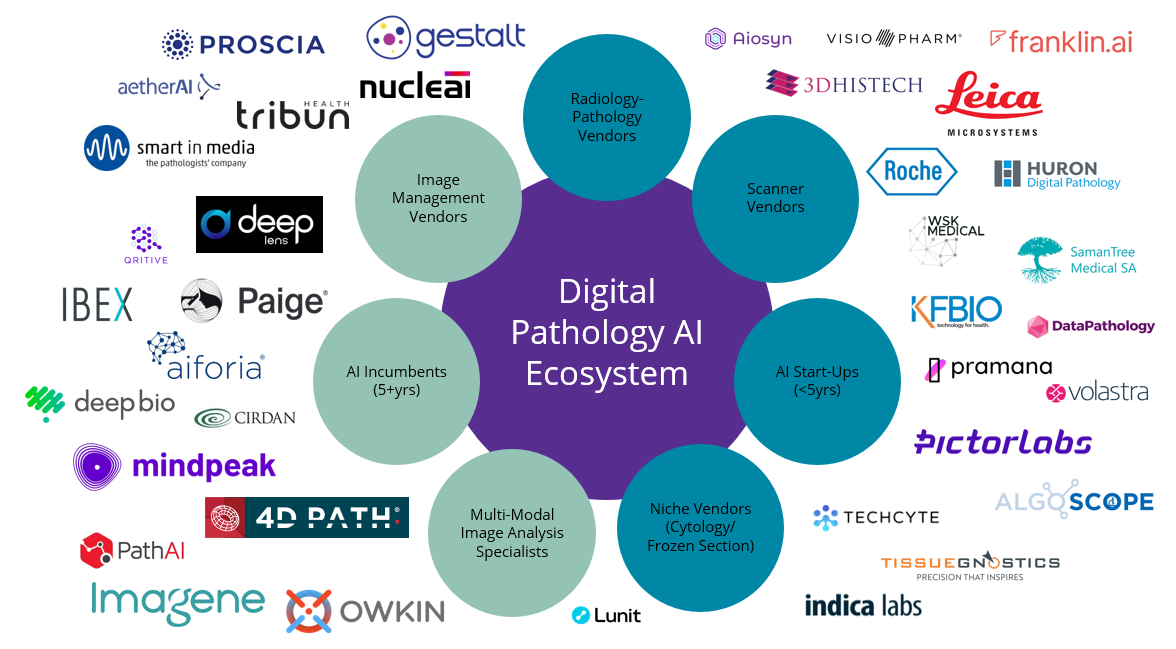Whilst growth in the overall digital pathology AI market is set to scale quickly, cannibalization and consolidation are expected to create headwinds for individual AI vendors. How do investors know where their money is safest?
The recent abundance of digital pathology (DP) media coverage can make it hard to remember that not too long ago, this was a market perpetually ‘lagging’ versus other digital healthcare sectors. And whilst growth has now firmly shifted to its ‘log’ phase, there are
Read More
Sustainability Matters – The Link Between Healthcare & Climate Change
The International Health Care Without Harm organization has stated: “Climate change is damaging human health today and will have a greater impact in the future.” In response to this growing challenge, the U.S. Department of Health and Human Services called on the healthcare industry, which is responsible for 4.4% of global CO2 emissions, to reduce emissions by 50% by 2030 and achieve Net Zero by 2050. Rising to meet the need, more than 60 of the largest hospitals and healthcare sector companies
Read More
Professional Development: The Overlooked Solution to Nurse Burnout & Turnover
Despite the recent end to the COVID-19 global public health emergency, its effects linger. This includes nurse and clinician shortages, which persist across hospitals and health systems nationwide. About 100,000 nurses left the workforce during the pandemic, with over 600,000 reporting their intention to leave by 2027, citing stress and burnout as primary reasons.
Now is the time for healthcare organizations to look inward and not only seek to remedy these deficits by counteracting
Read More
How Generative AI Can Transform Healthcare Contact Centers
Generative artificial intelligence (AI) arguably is the hottest topic today in the world of business and technology. With the ability to create content such as text, images, audio, and video, generative AI algorithms are being tested for use cases in marketing, finance, education, and healthcare.
ChatGPT and other generative AI platforms have tremendous potential to transform healthcare and other industries. But the current inherent limitations of generative AI introduce compliance and
Read More
How the VA Uses Synthetic Data to Predict Veterans’ Suicide Risk
Suicide is a major public health crisis in America, resulting in one death every 11 minutes, on average.
In 2020, suicide was among the top 9 leading causes of death for people between 10 and 64 years of age. Each year, suicide and nonfatal self-harm cost the nation nearly $490 billion in medical costs, work-loss costs, the value of statistical life, and quality-of-life costs, according to statistics cited by the U.S. Centers for Disease Control and Prevention.
For America’s
Read More
Human Factors in Burnout and the Adoption of Medical Devices
Human factors and assessments in medical devices are becoming more important to health systems and health services researchers. The evolving priorities within healthcare truly underscore the importance of human factors and to practitioners gaining access to key contextual information to facilitate a more holistic view of the system.
Designing for Human Needs in Healthcare
Relative to other high-risk industries, medicine, and health systems have been slow to adopt a human factors
Read More
Is Gait The Most Overlooked Patient Vital Sign?
Routine health assessments will typically involve measuring heart rate, blood pressure, blood oxygen saturation, and body weight. Current medications are reviewed, and patients are asked if they’ve experienced any changes in their health lately. A brief assessment of balance and muscle strength follows, but what about gait? Most people know their blood pressure or weight, but few can accurately describe the way they walk.
The five commonly known vital signs – temperature, heart rate,
Read More
Why The Healthcare Industry Needs Blockchain More Than Ever
Trust is a crucial part of any society, and it is of the utmost importance within the healthcare industry. Ensuring the trustworthiness of healthcare providers is essential for patient confidence as they must be able to trust them to offer accurate information, make informed decisions, and act in their best interest, all while prioritizing privacy and anonymity. Although these tenants remain integral, trust is often broken in more ways than one.
The widespread feeling of distrust has
Read More
The Problem With Modern Disinfectants & What The Future of Infection Protection Should Look Like
Keeping surfaces pathogen-free is crucial in preventing the transmission of diseases and infections. Pathogens are microorganisms that can cause illness, and they can easily spread from contaminated surfaces to people who come into contact with those surfaces. This is a major concern in healthcare settings such as hospitals, where pathogens can spread easily and cause infections in vulnerable patients. In addition, pathogen spread can also occur in public places such as schools, workplaces, and
Read More
The Future is Now: How AR is Changing the Healthcare Landscape
Not long ago, augmented reality (AR) sounded like something straight out of a sci-fi novel. Today, the rapidly-evolving technology is beginning to change the way many industries function, and healthcare is one of the very promising areas.
A doctor’s office a decade in the future could look very different from a doctor’s office of the present; as AR and virtual reality tools develop, they will fundamentally elevate the quality and convenience of healthcare options for all segments of the
Read More











